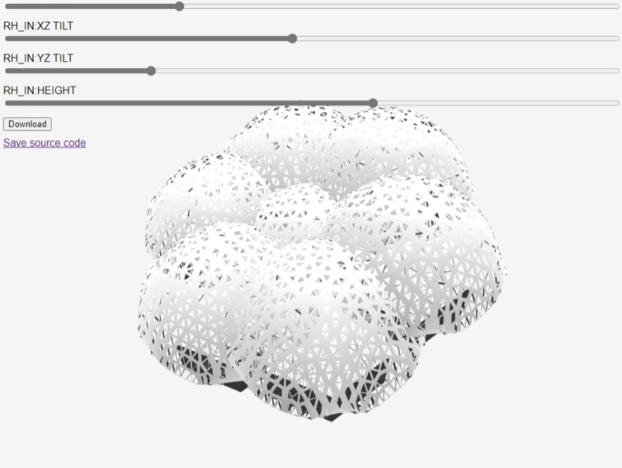Space Farm – Feeding 100 astronauts on the Moon
Answering the challenge to feed 100 astronauts, my team proposed to scale up an existing smart-farming model on Earth to cater for the harsh environment on the Moon. The model works on a modular system. It mimics natural cycles in an ecosystem. Our proposed space farm consists of four main modules – fungi, fishes, insects and vegetables. In addition, one can find other modules providing life-support, storage, administration and waste management.
Using Simplified Model for Team Discussion
We decided to divide the design of the farm into three parts – outer shell, inner shell and interior. As a result, each of us was responsible for one part and I looked after the interior part. During the Digital Tools for Cloud-based Data Management course, we learnt to work with data and geometry in interactive web applications. Then, I tried to build an interactive 3D-model and make it available online. At that time, the team was facing the challenge to build on a steep slope. The team must coordinate to fit the three parts together. Therefore, I built a sketch model for myself and intended to use it during our quick online discussions.
Learning Experience
The course taught many techniques but I could not develop the model further to a better quality. However, it serves a starting point for myself to develop my skills in developing websites.

Illustration showing the response of 3D model to changing parameters
Link:- FinalAssignment.gh (spheretrial.herokuapp.com)
CREDITS
Space Farm (beta) is a project of IAAC, Institute for Advanced Architecture of Catalonia developed at Master in Advanced Computation for Architecture & Design in 2020/21 by
Student: Alexander Tong
Faculty: Luis Fraguada and Will Pearson